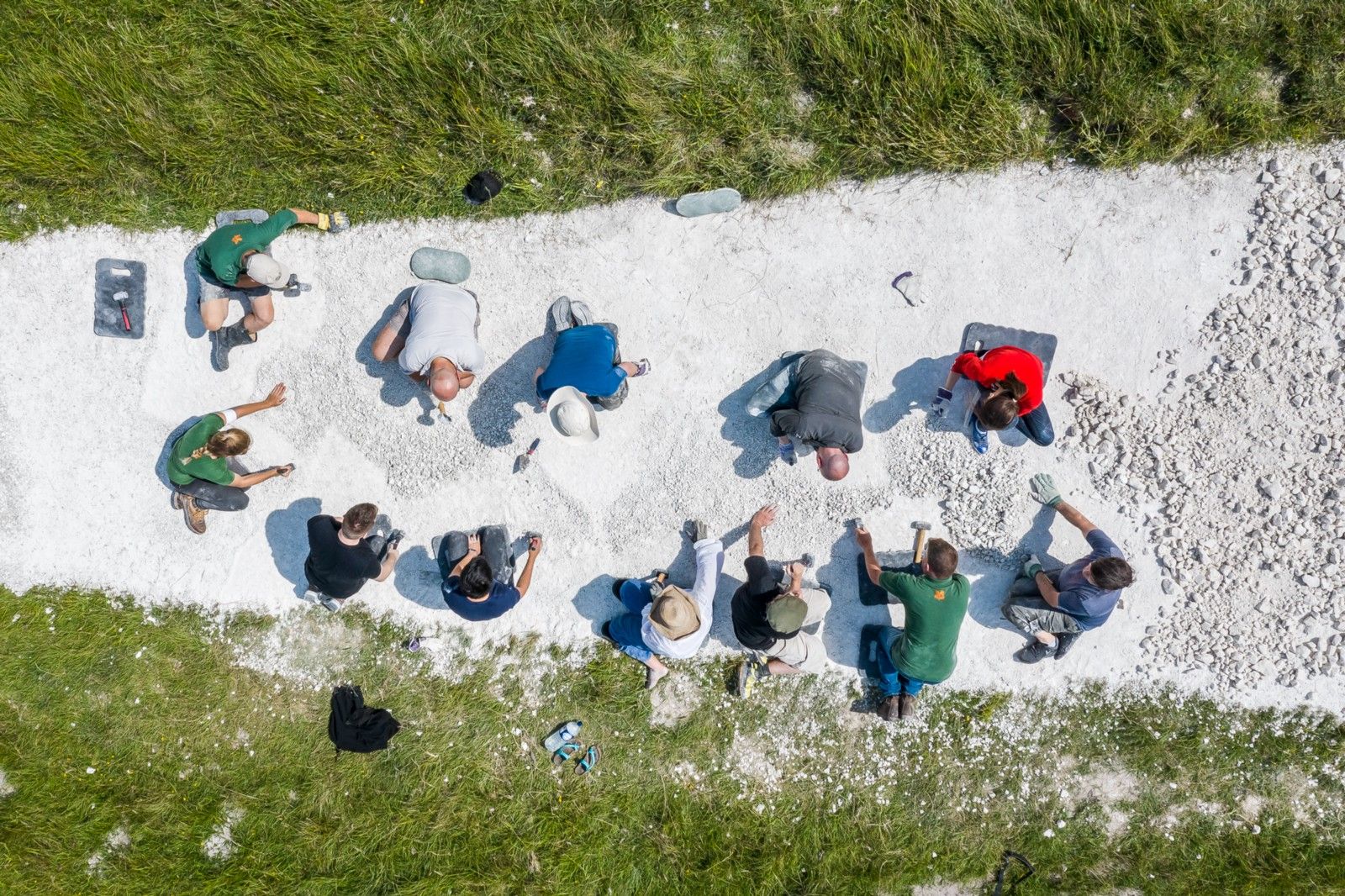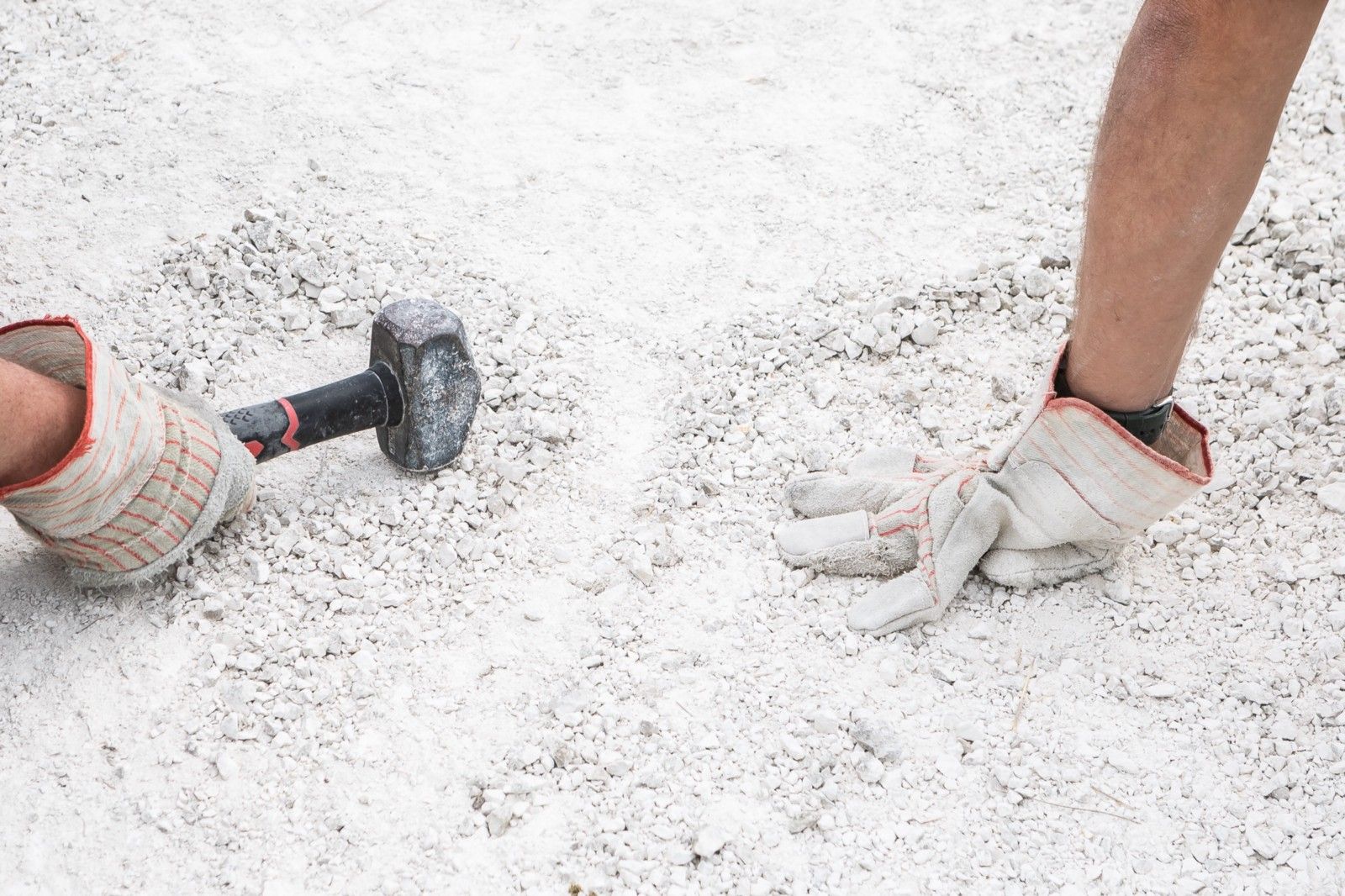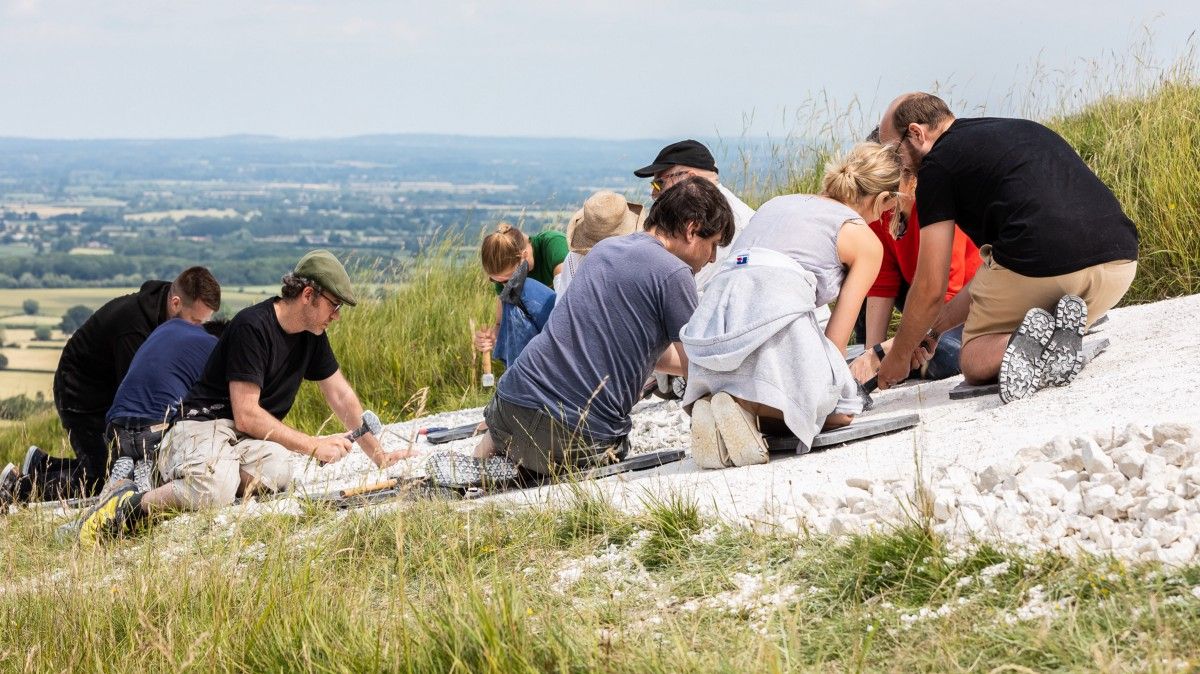Imagine, if you will, that you could travel back in time three thousand years to the late Bronze Age, with a bird’s eye view of a hill near the present-day village of Uffington, in Oxfordshire, England. From that vantage, you’d see the unmistakable outlines of a white horse etched into the hillside. It is enormous — roughly the size of a football field — and visible from 20 miles away.
Now, fast forward. Bounding through the millennia, you’d see groups of people arrive from nearby villages at regular intervals, making their way up the hill to partake in good old fashioned maintenance. Using hammers and buckets of chalk, they scour the hillside to ensure the giant pictogram is not obscured. Without this regular maintenance, the hill figure would not last more than twenty years before becoming entirely eroded and overgrown. After the work is done, a festival is held.
Entire civilizations rise and fall. The White Horse of Uffington remains. Scribes and historians make occasional note of the hill figure, such as in the Welsh Red Book of Hergest in 01382¹ (“Near to the town of Abinton there is a mountain with a figure of a stallion upon it, and it is white. Nothing grows upon it.”) or by the Oxford archivist Francis Wise in 01736 (“The ceremony of scouring the Horse, from time immemorial, has been solemnized by a numerous concourse of people from all the villages roundabout.”). Easily recognizable by air, the horse is temporarily hidden by turf during World War II to confuse Luftwaffe pilots during bombing raids. Today, the National Trust preserves the site, overseeing a regular act of maintenance 3,000 years in the making.

Earlier this summer, members of Long Now London took a field trip to Uffington to participate in the time-honored ceremony. Christopher Daniel, the lead organizer of Long Now London, says the idea to chalk the White Horse came from a conversation with Sarah Davis of Longplayer about the maintenance of art, places and meaning across generations and millennia.
“Sitting there, performing the same task as people in 01819, 00819 and around 800 BCE, it is hard not to consider the types and quantities of meaning and ceremony that may have been attached to those actions in those times,” Daniel says.

Researchers still do not know why the horse was made. Archaeologist David Miles, who was able to date the horse to the late Bronze Age using a technique called optical stimulated luminescence, told The Smithsonian that the figure of the horse might be related to early Celtic art, where horses are depicted pulling the chariot of the sun across the sky. From the bottom of the Uffington hill, the sun appears to rise behind the horse.
“From the start the horse would have required regular upkeep to stay visible,” Emily Cleaver writes in The Smithsonian. “It might seem strange that the horse’s creators chose such an unstable form for their monument, but archaeologists believe this could have been intentional. A chalk hill figure requires a social group to maintain it, and it could be that today’s cleaning is an echo of an early ritual gathering that was part of the horse’s original function.”
In her lecture at Long Now earlier this summer, Monica L. Smith, an archaeologist at UCLA, highlighted the importance of ritual sites like Stonehenge and Göbekli Tepe in the eventual formation of cities.
“The first move towards getting people into larger and larger groups was probably something that was a ritual impetus,” she said. “The idea of coming together and gathering with a bunch of strangers was something that is evident in the earliest physical ritual structures that we have in the world today.”

For Christopher Daniel, the visit to Uffington underscored that there are different approaches to making things last. “The White Horse requires rather more regular maintenance than somewhere like Stonehenge,” he said. “But thankfully the required techniques and materials are smaller, simpler and much closer to hand.”
Though it requires considerably less resources to maintain, and is more symbolic than functional, the Uffington White Horse nonetheless offers a lesson in maintaining the infrastructure of cities today. “As humans, we are historically biased against maintenance,” Smith said in her Long Now lecture. “And yet that is exactly what infrastructure needs.”

When infrastructure becomes symbolic to a built environment, it is more likely to be maintained. Smith gave the example of San Francisco’s Golden Gate Bridge to illustrate this point. Much like the White Horse, the Golden Gate Bridge undergoes a willing and regular form of maintenance. “Somewhere between five to ten thousand gallons of paint a year, and thirty painters, are dedicated to keeping the Golden Gate Bridge golden,” Smith said.


For members of Long Now London, chalking the White Horse revealed that participating in acts of maintenance can be deeply meaningful. “It felt at once both quite ordinary and utterly sublime,” Daniel said. “The physical activity itself is in many ways straightforward. It is the context and history that elevate those actions into what we found to be a profound experience. It was also interesting to realize that on some level it does not matter why we do this. What matters most is that it is done.”
Daniel hopes Long Now London will carry out this “secular pilgrimage” every year.
“Many of the oldest protected routes across Europe are routes of pilgrimage,” he says. “They were stamped out over centuries by people carrying or searching for meaning. I want the horse chalking to carry meaning across both time and space. If even just a few of us go to the horse each year with this intent, it becomes a tradition. Once something becomes a tradition, it attracts meaning, year by year, generation by generation. On this first visit to the horse, one member brought his kids. A couple of other members said they want to bring theirs in the future. This relatively simple act becomes something we do together—something we remember as much for the communal spirit as for the activity itself. In so doing, we layer new meaning onto old as we bash new chalk into old.”
Learn More
- Read more about the White Horse of Uffington in Emily Cleaver’s article for The Smithsonian.
- Watch Monica L. Smith’s Long Now Seminar, “Cities: The First 6,000 Years.”
- Long Now London meets on the second Thursday of each month. The next gathering is at the Royal Society of Arts on Thursday, September 12th at 6pm. They will be screening Benjamin Grant’s recent Long Now Seminar, “Overview: Earth and Civilization in the Macroscope.” More info can be found here.
- Those interested in Long Now London can email hi@longnowlondon.org or follow them on Twitter and Instagram.